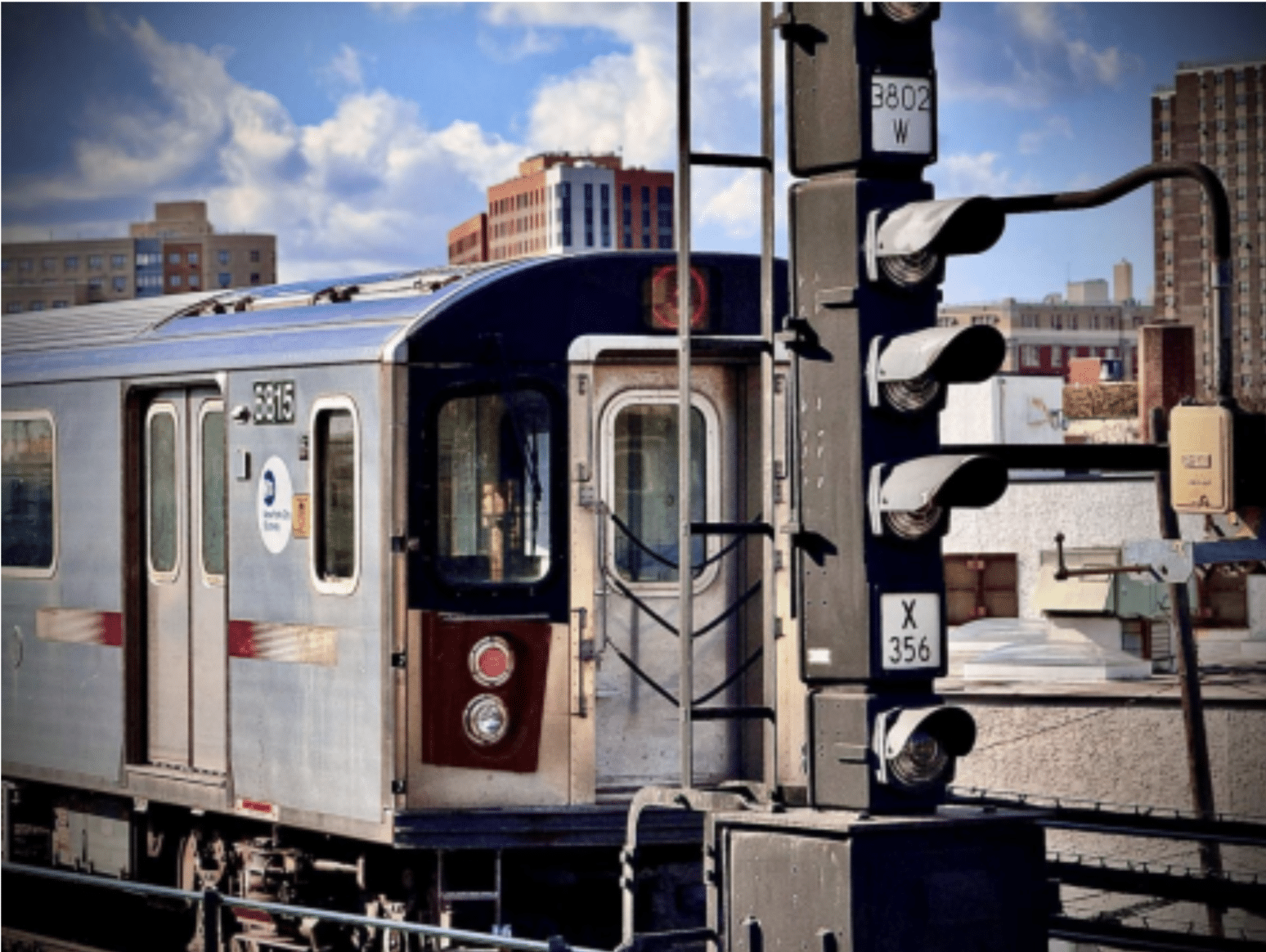An above-ground NYC subway car in November 2024. Photo by Tevin McKenzie.
Sobyn Brown was scrolling through TikTok earlier this month, when a video made her stop cold. It wasn’t the usual dance challenges or makeup tutorials. Instead, the camera zoomed in on something much more disturbing—a severed body part, clearly visible after a subway surfing attempt had gone terribly wrong. Brown felt her stomach drop as the reality of what she was watching sank in.
Unable to shake the image from her mind, Brown quickly closed the app; opened X (formerly Twitter) and shared her thoughts, her words reflecting her shock and disbelief. “Why are people subway surfing in real life,” she wrote. “Cause I just saw a body part on TikTok.”
The disturbing video Brown stumbled upon depicted a tragic subway surfing incident in Harlem on November 6. An 18-year-old woman, attempting to climb on top of a moving No. 2 train at the West 135th Street-Lenox Avenue station, fell between two cars, landing on the tracks. Emergency responders were able to rescue the victim, however, not all subway surfers have had the same luck.
This year alone, subway surfing has resulted in at least six deaths in New York City, with many others suffering severe injuries. In addition to the physical dangers, the NYPD has reported a significant rise in arrests related to the stunt. Since January, authorities have arrested 181 individuals for attempting to ride on top of subway trains or engaging in similar behavior. On November 18, the City Council held an oversight hearing to discuss ways to stop subway surfing.
Social media is driving a dangerous trend where thrill-seekers are putting lives at risk. As the allure of online attention grows, so do the deadly consequences of these risky behaviors.
Dr. Colleen Sherman, a child and adolescent psychologist based in Wilmington, Delaware, explains that the motivations behind subway surfing are deeply rooted in adolescent brain development. “The emotional center—the pleasure-seeking and appetites—develops before the prefrontal cortex, which is the self-control center, the place where you check your impulses before you act on them,” she explains. “This uneven development means that “adolescents are destined to be more risk-taking.”
“Thrill seeking and risk taking are natural parts of adolescent development,” she adds. “In moderation, that’s a good thing… that’s how they learn, and that’s how they engage in less risky behaviors as they mature.”
While public awareness campaigns attempt to discourage this behavior, Dr. Sherman suggests that a more effective approach would involve teens hearing directly from their peers. “We all know that ‘just say no’ is not really an effective approach,” she acknowledges. “But if you’ve got people… who can speak out about it from their experience, that’s what I think would have an impact.”
Lynne Scott Jackson, a distinguished professor of communications at CCNY, also agrees that the current campaign isn’t working. “The ‘Ride Inside, Stay Alive’ campaign is very mass market and generic.”
Instead, she too suggests that peer-led or influencer-driven campaigns would be far more effective. “If there are any PSAs recorded by students, I really haven’t seen these,” she shares. “But alas, I’m not the target audience.”
Despite the concerning statistics and expert analyses, New York City youth seem to understand the dangers of subway surfing. Most have commuted by train all of their lives and know it’s not always safe. City College student Imtiaz Ahmed, a communications major, suggests proactive measures. “They need to build some kind of physical structure on the train to prevent kids and teens from climbing the trains,” Ahmed explains. “Having authority stand and watch the backs of each train station to stop those that may climb the train could also work.”
Since the accident in Harlem, officials have ramped up their use of drone technology to monitor for subway surfers. With increased arrests and campaigns aimed at dissuading participation, what more can be done to combat this crisis before it claims more lives?
Amy Ndiaye, also majoring in communications, has an idea: “Educational awareness and increased security or more amplified social media campaigns against subway surfing could help stop the crisis.”
Tags: Amy Ndiaye City Council Crime Criminal Justice Dr. Colleen Sherman drone technology Harlem Lynne Scott Jackson NYPD public awareness Sobyn Brown Social Media Subway subway surfing subway trouble Teenagers Teens Tevin McKenzie Tik Tok Twitter youth
Series: Community






